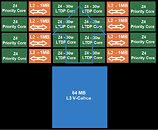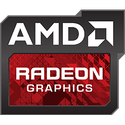
AMD Socket AM5 a "Long-lived Platform": CEO
AMD is designing its upcoming Socket AM5 platform to be a "long-lived platform," not unlike AM4. CEO Dr Lisa Su, responding to a question on the longevity of AM5, by Paul Alcorn from Tom's Hardware, said that she's very happy with AM4 being the company's long-lived desktop socket; and while she doesn't have an exact number of years to share, one could expect AM5 to be a "long-lived platform" of a similar kind.
AMD Socket AM4 was debuted alongside the company's very first Ryzen processors, in March 2017. It has remained AMD's mainstream desktop socket for close to five years; and AMD continues to launch new products for the socket. Even in 2022, the company is expected to give the socket its swansong, with the Ryzen 5000X3D processors. AM4 was designed keeping in mind dual-channel DDR4 and up to 28 lanes of PCIe Gen 3 (later Gen 4) in mind. The change to Socket AM5 is driven by next-generation I/O, namely DDR5 memory (four 40-bit channels), and PCIe Gen 5.
AMD Socket AM4 was debuted alongside the company's very first Ryzen processors, in March 2017. It has remained AMD's mainstream desktop socket for close to five years; and AMD continues to launch new products for the socket. Even in 2022, the company is expected to give the socket its swansong, with the Ryzen 5000X3D processors. AM4 was designed keeping in mind dual-channel DDR4 and up to 28 lanes of PCIe Gen 3 (later Gen 4) in mind. The change to Socket AM5 is driven by next-generation I/O, namely DDR5 memory (four 40-bit channels), and PCIe Gen 5.


























































